The Art Encounters Foundation together with the Cluj Cultural Center organized the first edition of The Autumn School of Curating, that took place in Cluj and Timișoara between 20-27 October 2019, marking the closing week of the Art Encounters Biennial 2019. With curator and writer Joanna Warsza as course leader, The Autumn School of Curating put forward the format of Conversation as the main platform for dialogue, knowledge sharing, and learning tool. Over the course of a week, the participants had the opportunity to acquaint themselves with a number of artistic communities, to start conversations with professionals from the art world, with potential future collaborators.
After more than four months since the course ended, I reached out to two of the participants in order to offer a snapshot of the school’s experience, but also of the artistic fields of their professional practice and, particularly, of the ones they have encountered in this specific context.
Iris Ordean is a cultural anthropologist, theoretician, writer, and independent curator based in the United Kingdom and France. In the present, Iris is working on a research project as a Leverhulme doctoral scholar at Durham University, UK. Iris participated in the International Curatorial Program hosted by Node Centre for Curatorial Studies in Berlin, Germany. She has worked and taken training sessions in cultural institutions like The Peggy Guggenheim Collection in Italy, the Venice Biennale, or the International Festival in Edinburgh.
Espen Johansen is an art historian, curator and writer; he lives in Bergen, Norway. He holds an MA in Art History from the University of Bergen and a Curatorial degree from the Bergen Academy of Art and Design. He is currently doing a post-master, Negotiating Artistic Value: Art and Architecture in the Public Sphere at the Royal Institute of Art in Stockholm. His curatorial practice stems from investigations into the potency of art as an alternative communicative device in our mediatized society, particularly focusing on art in public space and the power structures of the public sphere, examining the real distribution of roles and messages.
The concept of “conversation”, as defined by Joanna Warsza during her well-planned intensive course, can be a source of inspiration on multiple levels: it can be the basis for a public program, generate the theme of a future exhibition or create the premises for a discussion group dealing with contemporary art, stretching far beyond the set-up of the curatorial school. Which was the most important aspect of this school that can potentially guide your own curatorial experience in the future?
Iris Ordean: The beauty of conversation resides in the fact that it only seldom has a predetermined finishing line, and this prompts an active and ongoing participation of all the parties involved. The strength of the concept proposed by The Autumn School of Curating came from the natural way in which the invitation to conversation arose, with only very little guidance, rather than being confined to a stiff or a formalized framework. At the same time, the talks did not, for a moment, lose sight of the context, neither that of the local art scene, nor of that of the Art Encounters Biennial. I found the itinerant and decentralized character of the school particularly enticing when it came to the venues and spaces it proposed, but also to the way we related with the local or foreign artists and art professionals.
On top of the curatorial methods and concepts discussed, during the last few days of the program, the interactions evolved toward a salutary dialogue observing the balance between capital and labor. In a world that heads irredeemably towards gentrification and capitalization, acknowledging, remunerating and appreciating the work of each individual that contributes to the betterment of collectivity, becomes nowadays an elementary gesture of resistance.
Espen Johansen: I found the concept of the conversation liberating. It does not impose a straight movement towards a goal but rather allows multiple opinions – possibly contradictory – to inhabit the same intellectual space. This openness also allows us to tackle hyper-complex subjects while acknowledging our uncertainties instead of hiding them under the guise of producing sound arguments. I believe what I will take from Joanna Warsza’s Autumn School of Curating is to always try to embrace my vulnerability facing the uncertain and rather focus on the honest and sympathetic attempt to uncover new meanings and truths, or simply just cherish the process of exchange of thoughts and questions.
When considering the topics of the conversations held at the Curatorial School, do you see a connection with the theme of this edition of the Art Encounters Biennial? Have you found a way to put into practice what has been discussed in classes during your visit to the Biennial?
I.O.: Generally speaking, any art event is an invitation to conversation. As I mentioned earlier, the themes and events we discussed in the Curatorial School were examined taking into consideration their relation to the context and location. Although the program didn’t focus exclusively on the Art Encounters Biennial, it was well integrated in the school’s format, yet without monopolizing all the attention. As it often happens with intensive events of this sort, many connections of conceptual nature develop in time, keeping thus the conversation always open.
E.J.: Yes, I definitely found the concept appropriate in connection to the biennial curated by Maria Lind and Anca Rujoiu. I was intrigued by the gentle curatorial approach for the Art Encounters Biennial, which developed through a conscientious methodology starting with artists and artworks instead of shaping the biennial to address a trending contemporary topic (i.e. Anthropocene, or any other biennial buzzword, which sometimes gets instrumentalized). The overarching curatorial concept was not at all invasive, making the impact of individual artworks more powerful.
One of the goals of the visits and talks that took place in Cluj and Timișoara was also to allow you to get to know the local art scene and to meet some of the people who play an active role in its shaping. Which meetings you found most inspiring?
I.O.: I believe that every meeting was a unique opportunity to catch a glimpse of the creative universe of those who welcomed us in their studios or visited us at our workspaces. It would be difficult for me to make a ranking, no matter how subjective it would be, more so because the people we met with were incredibly different, from artists and authors to cultural mediators and theorists. Each of these meetings enriched in a unique way the experience of the Curatorial School.
Instead I would like to talk about a different kind of meetings, if we were to think about the name of the Biennial, Art Encounters. I am talking about the encounters that take place in the absence of the artist, about the encounters we have with the artworks, which we, as curators-visitors, see from a unique standpoint, one in-between these two roles. It is difficult for us to leave our professional interest at the door. Thus, an exhibition rapidly becomes a forum inviting reflections – in our case followed by intense discussions – regarding the curatorial concept and modes of implementation. And last but not least, I repeatedly found myself over the course of the program thinking about the dynamic artist-curator, curator-mediator, curator-production team, topics that have been on my mind a lot, lately.
E.J.: Both Cluj and Timisoara are wonderful cities to visit, and I regret not having more time there to immerse myself deeper into the art scene. I do not know which meeting stood out the most, and believe I was more struck by the energy amongst the younger generation taking matters into their own hands, producing contemporary art without the involvement of larger institutions. I found the general atmosphere extremely vibrant. I was really impressed by the SABOT space in Cluj, and especially the beautiful works by Răzvan Botiș stuck with me long afterwards.
Another special meeting was also that with the other participants in the school, your colleagues with whom you spent a week. How do you see the immediate impact of the relationships established now and their subsequent outcomes?
I.O.: Over the past years, I took part in several different professional training programs that implied spending long periods of time together with my training colleagues; I have always found these formats to be interesting experiments, revealing group energies, personal approaches but also personal limits. They are all the more productive because they offer the participants the opportunity to come in contact with other people with whom they share a lot of interests in a generous context that goes beyond the formal and sometimes rigid behavioral patterns usually found in cultural institutions. At the end of such events, I always have the feeling that we have spent more time together than we actually have. I was also impressed by the solidarity that developed between the members of the Curatorial School, in part triggered by the act of working together, in part by spending time together outside of the course. On top of being given the chance to exchange ideas, the long-term effects of such programs can take the form of future collaborations between former colleagues, born out of this deeper and more authentic familiarity that comes with this kind of dense format.
E.J.: Spending a week or so with my fellow participating curators was incredibly inspiring. I learned a ton from them, both in terms of curatorial practice and thinking but also in terms of the societal conditions in which they operate. Which role art is given in politics in European nations; where it is oppressed and in what way; what happens when art is generously funded; which strategies of resistance can be utilized and with what results, etc. These conversations have made me more self-reflexive – of myself and of the Norwegian art context – and more aware of the complexities between art, politics, and the public. Now, a few months after the conclusion of the first edition of the Curatorial School, I miss our engaging conversations and hope to find possibilities to meet up and collaborate with the group again. And also, to come back to see more of Romania.
* Making Conversation Pieces – The Autumn School of Curating will be an editorial piece made of two component texts, which distinctly analyzes the students’ experiences in Cluj-Napoca, and Timișoara respectively. Read part I.
POSTED BY
Georgia Țidorescu
Georgia Țidorescu is studying for a MA degree in Contemporary Curatorial Practices at the University of Art and Design Cluj-Napoca where she also got a BA in art history. Since 2018 she worked as an ...

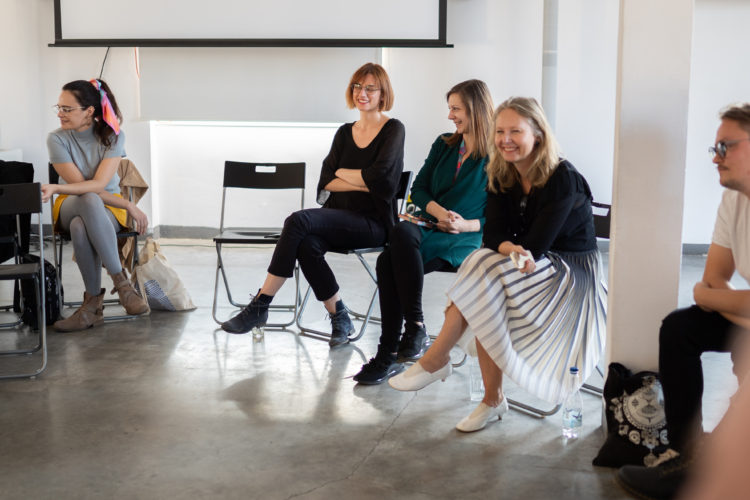
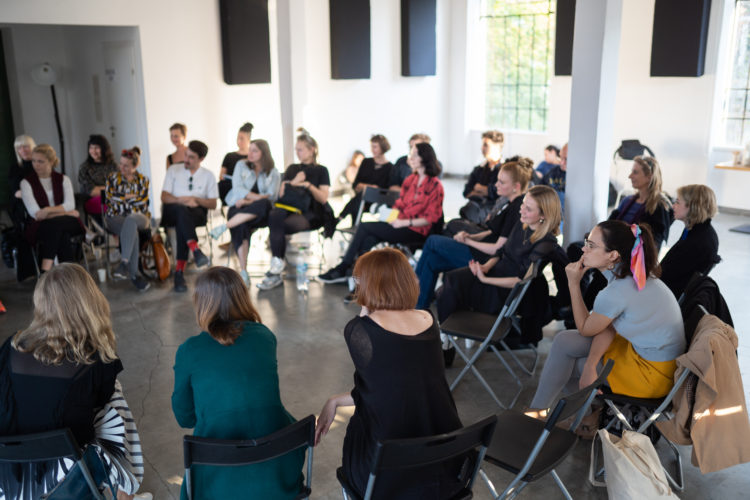
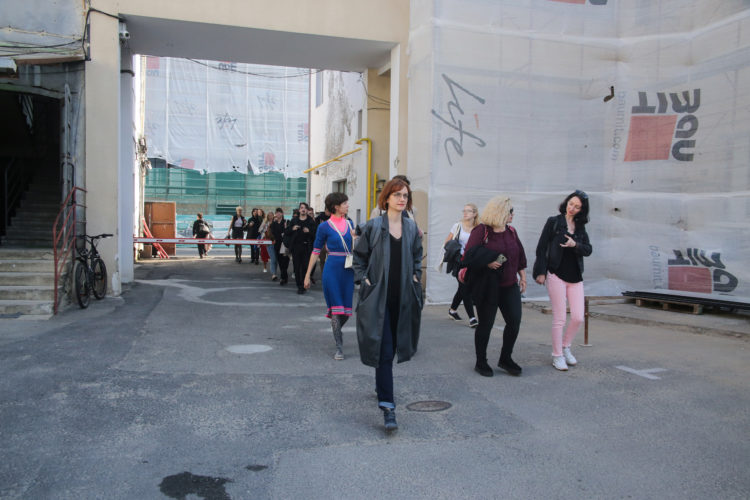
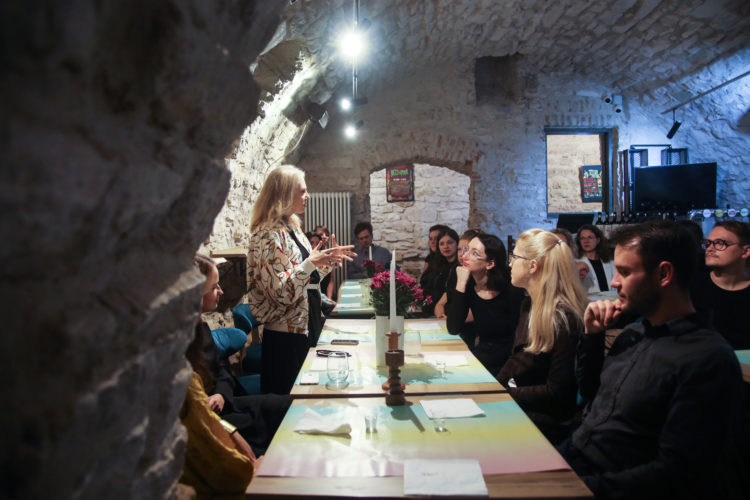
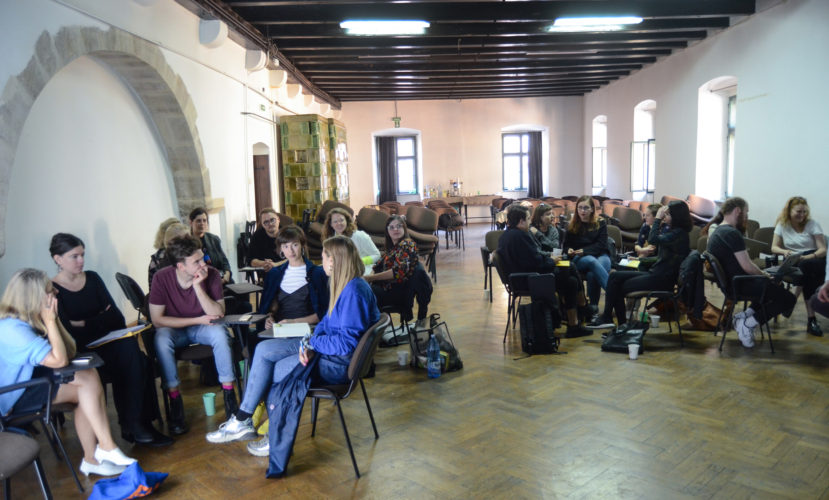
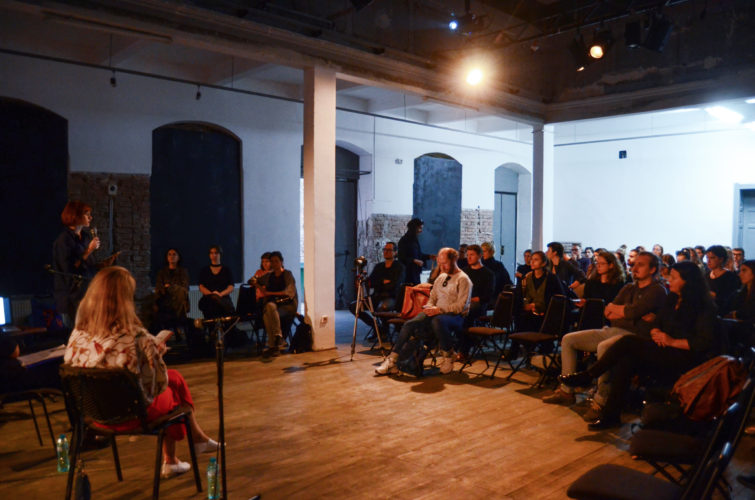
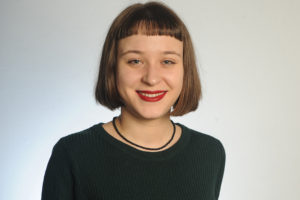
Comments are closed here.